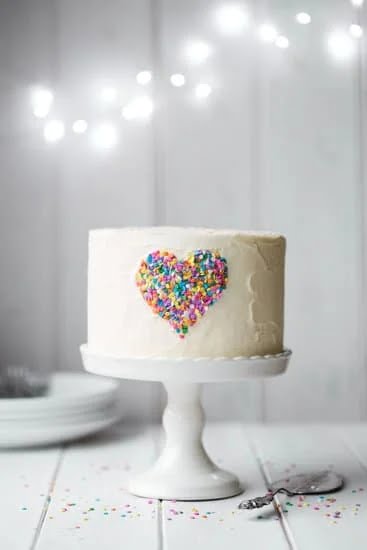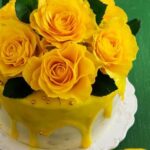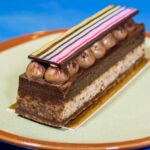Petal dust is a versatile and essential tool in the world of cake decorating. This fine powder, available in an array of vibrant colors, adds depth, dimension, and a touch of elegance to any cake design. Whether you’re a professional baker or a home enthusiast, petal dust can take your creations to the next level.
In this article, we will explore everything you need to know about petal dust for cake decorating. We will start by understanding what petal dust is and why it plays such a crucial role in enhancing cakes. From there, we will delve into the different types of petal dust available – edible and non-edible – and discuss their respective features and uses.
Using petal dust offers numerous benefits when it comes to cake decorating. It allows you to achieve realistic shades and textures on petals, leaves, or any other fondant or gum paste elements. Additionally, it can transform plain white cakes into dramatic masterpieces or be used subtly to highlight intricate details. By the end of this article, you’ll be convinced that no cake decorator’s toolkit is complete without petal dust.
Next, we will guide you through selecting the right petal dust for your specific cake design. With countless options on the market, it’s important to choose colors that harmonize with your overall theme while considering factors like intensity and ease of application. We’ll provide expert tips on selecting the perfect shades for any occasion.
Stay tuned as we go step-by-step through how to apply petal dust effectively onto your cakes. From simple brushing techniques to more advanced blending methods, our comprehensive guide will help you achieve stunning results every time. With added tips and tricks along the way, you’ll soon have the confidence and skillset needed to create truly breathtaking designs using petal dust.
In this article series, we aim to become your ultimate resource for all things related to petal dust in cake decorating. From popular color combinations to avoid and common mistakes to steer clear of, we’ve got you covered.
We’ll also explore advanced techniques and creative uses of petal dust that will take your skills to the next level. Finally, to address any lingering questions, we will provide answers to frequently asked questions about using petal dust in cake decorating.
Whether you’re just starting out or already an experienced cake decorator looking for new inspiration, our guide on petal dust for cake decorating will equip you with the knowledge and techniques necessary to create extraordinary cakes that are sure to impress. So let’s dive in and uncover the secrets behind this magical tool called petal dust.
Understanding the Different Types of Petal Dust
Petal dust is a versatile and essential tool for cake decorators that can add depth, dimension, and stunning effects to any cake design. However, it is important to understand the different types of petal dust available on the market. There are two main categories: edible and non-edible petal dust.
Edible petal dust is specially formulated using FDA-approved ingredients, making it safe for consumption. It is made from various food-safe substances such as sugar, cornstarch, or rice flour, and is often labeled as “edible” or “food-grade.” This type of petal dust can be directly applied to the surface of cakes and other sweet treats without any concerns about its safety.
On the other hand, non-edible petal dust is not meant to be consumed. It is typically made from non-toxic materials like powdered pigments or minerals that are safe for decorating purposes but should not come into direct contact with food. Non-edible petal dust is commonly used on decorative flowers, fondant sculptures, or other cake decorations that will be removed before serving.
When choosing between edible and non-edible petal dust, it’s crucial to consider your specific cake design and whether the decoration will come into direct contact with the cake’s surface. If you’re planning to create a design where the decorations will be consumed along with the cake, always opt for edible petal dust.
To summarize:
- Edible Petal Dust: Safe for consumption and can be directly applied to the cake.
- Non-Edible Petal Dust: Not meant to be consumed but perfect for decorative elements that won’t touch the final product.
It’s essential always to read manufacturer labels carefully and double-check if the petal dust you choose is indeed edible or non-edible. By understanding these distinctions, you can ensure that your choice of petal dust aligns with your desired cake design while prioritizing safety and enjoyment for your customers.
The Benefits of Using Petal Dust in Cake Decorating
Petal dust is a versatile and essential tool for cake decorators that offers a wide range of benefits. This section will explore the advantages of using petal dust in cake decorating, highlighting how it can enhance the overall design and appearance of your cakes.
Firstly, one of the key benefits of using petal dust is its ability to add vibrant colors and depth to your cake designs. With a wide array of shades available, you can easily create beautiful gradients and shading effects on your cakes. Whether you want to achieve a realistic floral design or create a bold and whimsical pattern, petal dust allows you to add intricate details and dimension to your creations.
In addition to its decorative purposes, petal dust can also be used as an effective tool for covering imperfections or small blemishes on cakes. By applying a small amount of petal dust onto these areas, you can seamlessly blend them into the rest of the design, resulting in a flawless finish. This makes petal dust an invaluable asset for both professional cake decorators and amateurs alike who want to achieve a polished presentation.
Moreover, another benefit of using petal dust is its versatility in application. Whether you prefer to use dry brushing techniques or mix it with alcohol or lemon extract to create edible paint, petal dust offers various methods of application that cater to different preferences and requirements. This flexibility allows you to experiment with different techniques and achieve unique effects on your cakes.
How to Choose the Right Petal Dust for Your Cake Design
When it comes to choosing the right petal dust for your cake design, there are a few important factors to consider. The color, texture, and quality of petal dust can significantly impact the outcome of your cake decorating project. Here are some essential tips to help you make the best choice:
- Consider the color: Petal dust comes in a wide range of colors, from vibrant and bold to soft and pastel tones. It’s crucial to choose a color that complements your overall cake design. If you’re going for a natural look, opt for petal dust shades that mimic the colors found in real flowers.
- Check the texture: Petal dust can have different textures, such as fine, medium, or coarse. The texture you choose depends on the effect you want to achieve. Fine petal dust is ideal for creating a smooth and subtle color transition, while coarse petal dust can add more depth and dimension to your design.
- Assess the quality: The quality of petal dust is also crucial for achieving professional-looking results. Look for brands that offer high-quality edible pigments made specifically for cake decorating purposes. These pigments should be FDA-approved and safe to use on cakes.
| Factor | Tips |
|---|---|
| Color | Choose a color that complements your cake design. |
| Texture | Select the texture based on the desired effect. |
| Quality | Look for high-quality edible pigments made specifically for cake decorating purposes. |
By considering these factors and conducting thorough research on different brands and options available, you can confidently choose the right petal dust for your cake design. Remember to experiment and have fun with different color combinations and techniques to create stunning and unique cake decorations.
Step-by-Step Guide on How to Apply Petal Dust to a Cake
Applying petal dust to a cake is a simple and effective way to enhance its appearance. Whether you want to add a hint of color or create intricate designs, petal dust can be a versatile tool in your cake decorating arsenal. Follow this step-by-step guide to learn how to apply petal dust to your cake and achieve professional-looking results.
Step 1: Prepare Your Cake
Before applying petal dust, make sure your cake is ready. This could mean coating it with buttercream or fondant, depending on your design preferences. Ensure that the surface of the cake is clean and free from any crumbs or imperfections.
Step 2: Choose Your Petal Dust Color
Select the desired color of petal dust that matches your design concept. Petal dusts come in a wide range of shades, so you will have plenty of options to choose from. For a natural look, opt for earthy tones such as pinks, greens, or browns.
Step 3: Gather Your Tools
To apply petal dust, you will need some basic tools. These include a soft-bristle brush specifically designed for food use and a small dish or container to hold the petal dust. It’s important to use brushes made for food purposes since other types of brushes may not be safe for consumption.
Step 4: Load Your Brush
Dip the bristles of your brush into the petal dust, making sure it covers the entire surface area. Gently tap off any excess powder by lightly tapping the brush against the side of the container.
Step 5: Apply Petal Dust to Your Cake
With a light touch, begin applying the petal dust onto your cake’s surface. Start at one end and work your way towards the other, ensuring even coverage. If you’re aiming for precise details, use smaller brushes for more control.
Step 6: Blend and Build
If desired, you can blend different colors of petal dust to create unique effects. Apply a second color in the same manner as before, focusing on areas that deserve more attention or definition. Building layers of color will give your cake depth and dimension.
Step 7: Finishing Touches
Once you are satisfied with the application of the petal dust, take a step back and assess your work. Look for any areas that might need a touch-up or additional detailing. Use your brush to gently blend or correct any imperfections.
By following these steps and practicing your technique, you can achieve stunning results with petal dust in cake decorating. Experiment with different colors, techniques, and designs to unleash your creativity and bring your cake visions to life.
| Tools Needed | Materials |
|---|---|
| Soft-bristle brush | Petal dust (color of choice) |
| Dish or container | Cake (covered with buttercream or fondant) |
Tips and Tricks for Achieving Gorgeous Effects with Petal Dust
Petal dust is a versatile and essential tool for achieving stunning effects in cake decorating. With its ability to add depth, texture, and dimension to cake designs, petal dust is a must-have for any baker or decorator. In this section, we will explore some useful tips and tricks that can help you achieve gorgeous effects with petal dust.
Prepping the Cake
Before applying petal dust to your cake, it’s important to ensure that the surface is smooth and clean. Start by crumb coating the cake with buttercream or ganache to create a smooth base. Once the coating has set, you can proceed with applying petal dust.
Using Brushes
Choosing the right brush for applying petal dust is crucial for achieving precise and beautiful results. Soft-bristled brushes are ideal for larger areas, while smaller detailing brushes work well for intricate designs. When using a brush, lightly dip it into the petal dust and tap off any excess before gently brushing it onto the cake.
Layering Colors
One of the most effective techniques in working with petal dust is layering colors. This allows you to create depth and dimension in your design. Start with lighter shades as a base and gradually build up darker hues on top. Blend colors together using a clean brush or use a small amount of clear alcohol or lemon extract to create a more vibrant effect.
Airbrushing Techniques
Another popular method for applying petal dust is through airbrushing. Airbrushing provides even coverage and enables you to achieve seamless transitioning of colors. Dilute your petal dust with clear alcohol or lemon extract and fill your airbrush gun accordingly. Keep the nozzle at an appropriate distance from the cake surface while spraying in light layers to avoid oversaturating.
With these tips and tricks in mind, you’ll be able to create stunning effects using petal dust in your cake decorating. Experiment with different techniques, brushes, and color combinations to unleash your creativity and bring your cake designs to the next level. Remember to practice and have fun along the way, as mastering the art of petal dust application requires patience and a keen eye for detail.
Popular Color Combinations and Techniques for Petal Dust Application
One of the most exciting aspects of using petal dust in cake decorating is the endless possibilities for creating beautiful and unique color combinations. With a wide variety of colors available, you can let your creativity soar and experiment with different shades and tones to achieve stunning effects on your cakes.
One popular color combination for petal dust application is using shades of pink and purple. These soft and feminine colors work well for floral designs or when creating a romantic or whimsical theme. You can layer different shades of pink and purple to create depth and dimension in your design.
For example, start with a light pink base coat on your cake, then use a darker shade of pink to add shadows and definition. Finally, add touches of purple to highlight certain areas or create an ombre effect.
Another popular technique for petal dust application is called “dusting off.” This technique involves applying a layer of petal dust onto the cake surface, allowing it to settle for a few minutes, and then gently brushing off the excess powder with a soft brush. This creates a delicate and subtle sheen on the cake, perfect for achieving a vintage or ethereal look. To enhance this effect, you can use metallic shades such as gold or silver petal dust.
Furthermore, using contrasting colors can create striking visual impact in your cake design. For example, pairing complementary colors like blue and orange or red and green can create a vibrant and eye-catching contrast. You can apply one color as the base coat on your cake and then use the other color sparingly to highlight specific areas or details.
By experimenting with different color combinations and techniques, you can achieve fantastic results with petal dust in your cake decorating projects. Don’t be afraid to try new ideas and have fun exploring all the possibilities that petal dust has to offer.
Common Mistakes to Avoid When Using Petal Dust in Cake Decorating
Using petal dust in cake decorating can elevate your designs and add a beautiful, vibrant touch to your creations. However, there are certain common mistakes that beginners often make when working with this decorating tool. By avoiding these mistakes, you can ensure that your cake looks professional and stunning.
One common mistake to avoid is applying too much petal dust at once. It’s important to remember that a little goes a long way with petal dust. Start with a small amount and gradually build up the color intensity as needed. Applying too much dust can result in a cake that looks muddy or smudged rather than delicately decorated.
Another mistake to watch out for is not properly preparing the surface of the cake before applying the petal dust. Make sure that your cake has been properly crumb coated and has a smooth surface before you apply any dust. Any bumps or imperfections on the cake surface will be magnified once you start adding the petal dust, so take the time to prepare your cake accordingly.
Additionally, it’s important to consider how humidity can affect the application of petal dust. High levels of humidity can cause the colors of the dust to bleed or run on the cake surface, resulting in an undesired effect.
To avoid this, make sure to work in a cool, dry environment when using petal dust. You may also want to consider lightly misting your finished design with a clear edible spray to help set and protect the colors from potential humidity issues.
By being aware of these common mistakes and taking steps to avoid them, you can create stunning cake designs using petal dust. Remember to start with small amounts of dust, prepare your cake properly beforehand, and be mindful of humidity levels during application. With practice and attention to detail, you’ll be able to achieve beautiful results every time.
Expanding Your Skills
Creating Ombre Effects
One of the advanced techniques you can try with petal dust is creating ombre effects on your cakes. This technique involves blending multiple shades of petal dust to achieve a gradual transition of colors. Start by selecting a range of colors that blend well together, such as different shades of pink or blue.
Apply the darkest shade at the bottom of the cake and gradually lighten the color as you move up. Use a clean brush to blend the colors together for a smooth gradient effect.
Adding Shimmer and Shine
If you want to add some sparkle to your cake designs, consider using shimmery petal dust. These types of petal dust contain edible luster or pearlized powders that give your cakes a beautiful sheen. To achieve this effect, simply dust the desired areas of your cake with the shimmering petal dust using a soft brush. This technique works particularly well on wedding cakes or special occasion cakes where you want to create an elegant and luxurious look.
Painting with Petal Dust
Petal dust can also be used as paint for more intricate designs on cakes. This method allows you to create intricate patterns and detailed artwork on your cakes using various shades of petal dust mixed with a few drops of clear alcohol or lemon extract to create a liquid paste. Using a fine brush, carefully paint your design onto the cake surface. This technique is especially popular for painting flowers or delicate filigree patterns on wedding cakes.
Stenciling Techniques
Stenciling is another creative way to use petal dust in cake decorating. You can purchase pre-made stencils or make your own by cutting out desired shapes from plastic sheets or parchment paper. Secure the stencil onto the cake using toothpicks or tape and then dust over it with petal dust, using a brush or a sponge. Once you remove the stencil, you will be left with a beautifully stenciled design on your cake.
Sculpting Shapes and Figures
Petal dust can also be used to sculpt shapes and figures on your cakes. Mix petal dust with a small amount of edible glue or clear piping gel to create a paste-like consistency. This paste can then be molded into various shapes such as flowers, leaves, or even small figurines. Use your fingers or modeling tools to shape and add fine details. Once dry, these sculpted pieces can be attached to your cake using additional edible glue.
By experimenting with these advanced techniques and creative uses for petal dust, you can take your cake decorating skills to the next level and create unique and stunning designs that are sure to impress. Remember that practice makes perfect, so don’t be afraid to try new things and have fun with your creations.
Frequently Asked Questions About Using Petal Dust in Cake Decorating
In conclusion, petal dust is an essential tool for cake decorators looking to add depth and dimension to their creations. It is important to understand the different types of petal dust available, as edible and non-edible options serve different purposes. Edible petal dust can be ingested safely, while non-edible petal dust is used primarily for decorative purposes.
Using petal dust in cake decorating offers many benefits. It can bring a realistic touch to floral designs or provide a pop of vibrant color to any cake. By choosing the right petal dust for your design, you can achieve stunning effects and create a visually appealing cake that will impress any audience.
When applying petal dust to a cake, it is important to follow a step-by-step guide to ensure optimal results. By using the correct techniques and color combinations, you can achieve gorgeous effects that will enhance your overall design. However, there are common mistakes to avoid when using petal dust, such as applying too much or not blending properly.
For those looking to expand their skills in cake decorating, there are advanced techniques and creative uses for petal dust. Experimenting with different colors and application methods can lead to unique designs and captivating cakes that stand out from the crowd.
Finally, frequently asked questions about using petal dust in cake decorating can be addressed through research and practice. By understanding how to choose the right type of petal dust, apply it correctly, and avoid common mistakes, decorators can overcome any challenges they may encounter.
In summary, petal dust is a versatile tool that adds beauty and flair to cake designs. With knowledge about its different types and applications, decorators can confidently use this product to create stunning works of art that are sure to impress any audience.
Frequently Asked Questions
How do you make your own petal dust?
To make your own petal dust, you can start by collecting and drying flower petals of your choice. Once the petals are fully dry, grind them up into a fine powder using a food processor or mortar and pestle. Sieve the powder to remove any coarse particles, ensuring a smooth texture.
You can also add a few drops of edible alcohol, such as vodka, to enhance the consistency and make it easier to work with. Store the homemade petal dust in an airtight container until ready to use.
What is the difference between luster dust and petal dust?
Luster dust and petal dust are both commonly used in cake decorating and other culinary applications, but they have distinct differences. Luster dust is typically made from mica powder or other minerals that give it a metallic sheen when applied to surfaces. It adds a shimmering effect and is often used for highlighting or creating a metallic finish on cakes and other decorations.
On the other hand, petal dust is made from finely ground pigments derived from food-safe ingredients like plants or flowers. Petal dust is generally matte in appearance and is mainly used to color fondant, gum paste, or royal icing with more natural-looking shades.
Is Petal dust Edible?
Yes, petal dust is considered edible as its primary ingredients come from sources that are safe for consumption. However, it’s important to note that while it may be technically edible, it doesn’t mean that it should be consumed in large quantities or eaten directly on its own. Petal dust is primarily used as a decorative element in cake decorating where only small amounts are typically applied for visual purposes.
When using petal dust on edible creations like fondant-covered cakes or gum paste flowers, it’s meant to be brushed onto the surface rather than ingested directly. Additionally, always check the specific brand of petal dust you’re using to ensure it meets food safety standards and regulations before incorporating it into your culinary creations.

Welcome to our cake decorating blog! My name is Destiny Flores, and I am the proud owner of a cake decorating business named Cake Karma. Our mission is to provide delicious, beautiful cakes for all occasions. We specialize in creating custom cakes that are tailored specifically to each customer’s individual needs and tastes.





